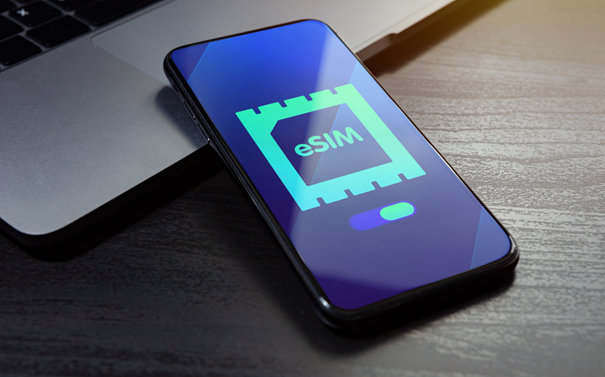If you run a modern team, you’ve heard the buzz around eSIM. The question is simple: should your business go digital-only, or is it too soon? An eSIM is a digital SIM built into a device. You don’t swap tiny plastic cards anymore. You download a profile from a carrier and activate service in minutes. No trays. No shipping. No fiddly tools.
That small change has big effects. It shifts how you buy, deploy, and manage mobile lines across your company. It also opens doors for global work and the Internet of Things. But it adds choices and a few new risks. Let’s break it down.
Why businesses are looking at eSIM now
Mobile work is the norm. Teams are in the field, at home, and on flights. Laptops, tablets, and hotspots all need data. Costs matter. Speed matters. So does control.
eSIM helps because it’s fast to set up and easy to switch. One QR code and you’re live. Need a new line for a contractor? It’s done in minutes. Send a tech into a storm zone? Push a local data plan on the fly. No store visit. No waiting on FedEx.
The core benefits
- Lower logistics costs
- No plastic SIM inventory, no shipping, fewer delays.
- Faster deployment
- Activate lines by email or QR code. Great for remote hires and seasonal staff.
- Flexible carrier choice
- Keep multiple profiles on one device. Switch when coverage or price changes.
- Better control for IT
- Centralize lines, assign plans, revoke access, and track usage in one place.
- Global mobility
- Land in a new country, add a local plan, and avoid surprise roaming bills.
- Smaller attack surface
- No SIM swap in a parking lot. The profile is tied to the device and admin controls.
Real-world snapshots
- Field services: Your technician cracks a phone at 7 a.m. A spare device is on the truck. IT pushes an eSIM profile in five minutes. The route stays on track.
- Sales teams: A rep flies to London. They add a local plan on arrival. Roaming charges drop, and calls stay clear.
- Retail pop-ups: New store opens Friday. Tablets need data. eSIM lets you activate lines on Thursday without a shipment scramble.
- IoT deployments: Sensors, trackers, and kiosks run on eSIM. No card handling. A simple batch activation does the job.
Where eSIM saves money (and where it might not)
You save on shipping, store visits, and downtime. Plan switching gets easier, which can push carriers to offer better rates. Global work also gets cheaper if you use local data plans.
It may not save much if your fleet is locked into favorable contracts. If your devices are older and don’t support eSIM, upgrades add cost. And if your team sits at one office with stable Wi-Fi, gains are smaller.
The risks and how to manage them
- Device support gaps
- Not every phone or tablet supports eSIM. Check models before you switch.
- Carrier availability
- eSIM plans exist in most regions, but not all. Confirm coverage and features.
- Process change
- Your team needs a new playbook. Train help desk staff and field managers.
- Security hygiene
- eSIM helps, but you still need MDM, MFA, and role-based controls.
- Number porting surprises
- Moving numbers between carriers can still take time. Plan cutovers.
Digital-only vs hybrid: which fits?
- Digital-only
- Best for distributed teams, frequent travel, IoT scale, and fast growth. You’ll standardize on eSIM-capable devices and a clear MDM stack.
- Hybrid (eSIM + physical SIM)
- Best if you have legacy hardware, strict carrier rules, or niche devices. You’ll move new lines to eSIM while keeping old units stable.
Many firms go hybrid for 6–12 months. They replace devices on the normal refresh cycle and end up 80–100% eSIM over time.
Security, compliance, and control
eSIM is not a magic shield, but it adds helpful layers.
- Tie lines to devices with MDM. If a phone is lost, wipe it and revoke the eSIM.
- Use role-based access so only a few admins can issue or move profiles.
- Log every activation and change. Keep those logs for audits.
- Use carrier APIs or an enterprise portal. Avoid one-off manual steps.
- Pair eSIM with MFA and encrypted backup. Basic, but vital.
How to roll out eSIM in your company
- Audit your fleet
- List devices, OS versions, carriers, and plan end dates. Flag eSIM-ready units.
- Pick a control plane
- Choose an MDM or carrier portal that supports bulk eSIM activation and policy.
- Run a pilot
- Start with 20–50 users across roles and geos. Measure activation time, coverage, and support tickets.
- Negotiate flexible plans
- Ask for pooled data, multi-carrier options, and global add-ons. Push for eSIM-first pricing.
- Build playbooks
- Document activation steps, device swaps, and travel profiles. Keep it short and visual.
- Train support
- Give your help desk a sandbox. Practice profile pushes and revokes.
- Phase the cutover
- Migrate by team or by renewal date. Avoid quarter-end crunch.
Travel and global work: the sweet spot
This is where eSIM shines. Set up regional plans before a trip. Or let users add approved local plans when they land. Keep the main number active while voice and data ride the best network.
Tips that pay off:
- Pre-load a travel profile on frequent fliers’ phones.
- Create a simple guide: scan, select plan, set default line.
- Cap roaming by default. Let local plans override when approved.
- Track usage spikes during events or storms.
What about IoT?
eSIM makes IoT scale less painful. You can:
- Provision devices at the factory and ship worldwide.
- Switch carriers to improve coverage without field visits.
- Keep one SKU per device instead of region-specific SIMs.
Watch for battery impact with poor coverage, and test plans on the edge of your expected service area. Cheap data is useless if the device cannot hold a signal.
Is now the right time for digital-only?
If your team travels, hires remote staff, or spins up devices often, the answer leans yes. If most of your phones are eSIM-ready and your carrier has mature support, yes again. If you’re locked into old hardware and rarely change plans, take a hybrid path first.
Final Words
eSIM is not a fad. It’s a cleaner way to run mobile at scale. You get speed, control, and flexibility, with fewer boxes and fewer delays. Go digital-only if your fleet is ready and your team values agility. Go hybrid if you need time. Either way, start learning now. Your next device refresh will go smoother because of it.

